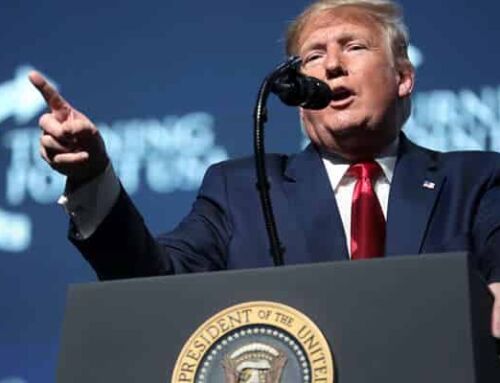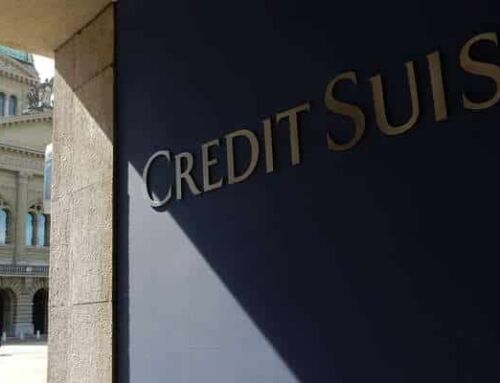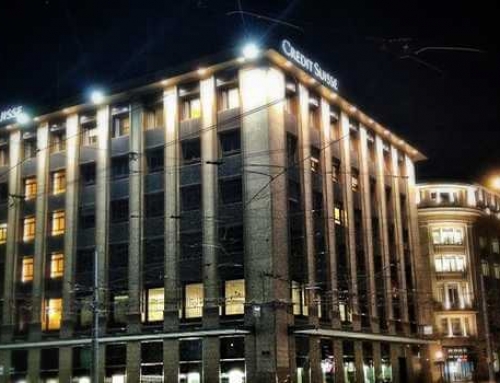The economy, however, remains on solid footing as other data on Thursday showed new orders for capital goods rising last month amid demand for machinery, indicating that some of the oil-related drag on business spending was fading.
And while the number of Americans applying for unemployment aid hit a six-month high last week, it remained below a level that is associated with labor market strength. The slowdown in growth is likely to be temporary given the strong economic foundation that could be bolstered by President-elect Donald Trump’s plan to slash taxes and boost infrastructure spending.
“The fourth quarter is coming in soft. The economy is going to end the year on a disappointing note, but we should see growth accelerate in the first half of 2017,” said Ryan Sweet, a senior economist at Moody’s Analytics in West Chester, Pennsylvania.
The Commerce Department said consumer spending, which accounts for more than two-thirds of U.S. economic activity, rose 0.2 percent after increasing 0.4 percent in October. When adjusted for inflation, consumer spending edged up 0.1 percent last month after a similar gain in October.
The moderation in consumer spending is, however, likely to be a blip. The labor market is near full employment, house prices are rising and the stock market has rallied close to record highs. In addition, consumer confidence is at the highest level since July 2007.
In another report on Thursday, the Commerce Department said the economy grew at a 3.5 percent clip in the third quarter instead of the previously reported 3.2 percent pace. That was the strongest growth rate since the third quarter of 2014 and followed the second quarter’s anemic 1.4 percent pace.
The upward revision reflected stronger growth in consumer spending, business investment in structures and intellectual property products than previously estimated, underscoring the economy’s solid fundamentals, which contributed to the Federal Reserve raising interest rates last week.
The U.S. central bank lifted its benchmark overnight interest rate by 25 basis points to a range of 0.50 percent to 0.75 percent, also encouraged by a sturdy labor market. The Fed anticipates three rate hikes in 2017.
The Atlanta Fed is forecasting GDP rising at a 2.5 percent rate in the fourth quarter.
The dollar was flat against a basket of currencies as traders took profits from a recent rally that had hoisted the greenback to a 14-year high. Prices for U.S. government bonds and stocks on Wall Street were trading lower in late trade.
INFLATION RETREATS
While slower consumer spending last month held back inflation, economists said that was unlikely to worry Fed officials as they expected the tightening labor market and the incoming Trump administration’s fiscal policy proposals to drive up price pressures.
The personal consumption expenditures (PCE) price index, excluding food and energy, was unchanged after edging up 0.1 percent in October. That lowered the year-on-year increase in the core PCE price index to 1.6 percent.
The core PCE index increased 1.8 percent in October, which was the biggest gain since July 2014. The core PCE is the Federal Reserve’s preferred inflation measure and is running below its 2 percent target.
“We think that the trend will keep firming over time, in part because we expect the labor market to continue to tighten,” said Daniel Silver, an economist at JPMorgan in New York.
Personal income was flat last month as wages and salaries fell 0.1 percent. Income increased 0.5 percent in October. With consumer spending outpacing incomes, savings fell to their lowest level since May 2015.
While consumer spending might be cooling, business investment is perking up after a prolonged slump.
In a third report, the Commerce Department said non-defense capital goods orders excluding aircraft, a closely watched proxy for business spending plans, increased 0.9 percent after gaining 0.2 percent in October.
A collapse in oil prices last year, together with a surge in the dollar, weighed on business spending on equipment, which has contracted for four consecutive quarters. Oil prices now are hovering above $50 per barrel, leading to gas and oil well drilling rising over the last several months.
Trump’s perceived business-friendly policies, which also include removing some regulations, are expected to boost investment next year. But renewed dollar strength in the wake of the business mogul’s Nov. 8 election victory could limit gains.
“Some businesses may have delayed investments as they awaited the outcome of the presidential election. These factors argue for a pickup in business investment,” said Andrew Hollenhorst, an economist at Citigroup in New York. “On the other hand, some businesses may now delay investments as they wait for further clarity regarding tax policy.”
A fourth report from the Labor Department showed initial claims for state unemployment benefits increased 21,000 to a seasonally adjusted 275,000 for the week ended Dec. 17, the highest since June.
Despite the increase, it was the 94th straight week that claims were below 300,000, a threshold associated with a healthy labor market. That is the longest stretch since 1970, when the labor market was much smaller.
(Reporting by Lucia Mutikani; Editing by Andrea Ricci)







